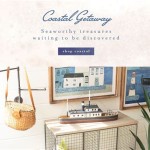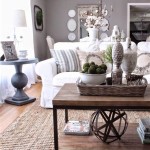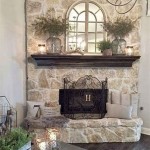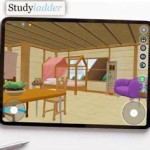Types of Modern Decor
Modern decor, characterized by its clean lines, minimalist aesthetic, and functionalism, has become a mainstay in contemporary interior design. While the term "modern" often refers to a specific historical period in design, it has evolved to encompass a wide range of styles that share certain core principles. Understanding the various facets of modern decor allows individuals to curate spaces that reflect their personal style, functionality, and aesthetic preferences. This article explores some of the most prominent types of modern decor, highlighting their defining characteristics and the elements that set them apart.
Mid-Century Modern
Mid-century modern, often abbreviated as MCM, finds its roots in the design movement of the mid-20th century, roughly spanning from the 1930s to the 1960s. It is characterized by a strong emphasis on functionality, simplicity, and the use of natural materials. Key features of MCM decor include:
- Organic Forms: Rounded edges, flowing curves, and sculptural pieces are common elements in furniture and lighting.
- Natural Materials: The use of wood, leather, wool, and other natural materials adds warmth and texture to the space.
- Bold Colors: While often associated with muted tones, MCM decor also incorporates vibrant hues, such as mustard yellow, teal, and coral, to create a sense of playfulness and energy.
- Geometric Patterns: Geometric patterns, such as stripes, polka dots, and chevron, are often incorporated into furniture upholstery or through decorative accents.
Iconic designers associated with the Mid-Century Modern movement include Charles and Ray Eames, Arne Jacobsen, and Eero Saarinen. Their furniture designs, characterized by their iconic silhouettes and innovative use of materials, remain highly sought-after today.
Scandinavian Modern
Scandinavian Modern, also known as Scandi style, emphasizes simplicity, functionality, and a connection to nature. It draws inspiration from the Nordic countries, such as Denmark, Sweden, and Norway, where the long winters and limited daylight hours necessitate the use of light and airy spaces. Key characteristics of Scandinavian Modern decor include:
- Minimalism: Scandinavian design prioritizes clean lines, uncluttered surfaces, and a focus on essential pieces.
- Light and Bright: White, gray, and pastel tones are commonly used to create a feeling of openness and spaciousness.
- Natural Materials: Wood, especially light-toned varieties like birch and pine, is a staple material, along with linen, wool, and cotton.
- Functional Design: Furniture is designed to be practical and multi-functional, often featuring built-in storage or transformable elements.
- Warmth and Cozy: Despite its minimalist aesthetic, Scandinavian Modern incorporates elements that create a warm and inviting atmosphere, such as plush textiles, soft lighting, and natural textures.
Scandinavian design is often seen as a more subdued and minimalist interpretation of Modernism. Its focus on functionality and natural materials makes it a popular choice for creating calming and welcoming spaces.
Industrial Modern
Industrial Modern decor embraces the raw and exposed elements of industrial spaces, blending them with the sleekness and functionality of modern design. This style celebrates the beauty of unfinished materials, exposed structures, and vintage industrial elements. Key characteristics of Industrial Modern decor include:
- Raw Materials: Concrete, steel, brick, and weathered wood are commonly used to create a sense of authenticity and industrial charm.
- Exposed Structures: Beams, pipes, and ductwork are often left exposed, adding a sense of history and character to the space.
- Vintage Industrial Accents: Antique machinery, repurposed lighting fixtures, and metal storage containers are incorporated as decorative elements.
- Dark and Moody Color Palette: Darker tones, such as charcoal, black, and navy blue, are often used to create a sense of depth and sophistication.
- Bold Contrast: The juxtaposition of industrial elements with modern furniture and lighting creates a dynamic and visually striking space.
Industrial Modern decor strikes a balance between the ruggedness of industrial design and the elegance of modern aesthetics. It is a popular choice for creating spaces that feel unique, edgy, and full of character.
Contemporary Modern
Contemporary Modern decor encompasses the latest trends and innovations in interior design, while still adhering to the core principles of modernism. It is characterized by a focus on clean lines, simplicity, and a sense of openness. Key characteristics of Contemporary Modern decor include:
- Geometric Shapes: Geometric shapes, such as circles, squares, and triangles, are often used in furniture, lighting, and artwork.
- Minimalist Color Palette: White, black, gray, and neutral tones are commonly used to create a clean and uncluttered space.
- Bold Statement Pieces: Contemporary Modern decor often features one or two bold statement pieces, such as a sculptural sofa or a striking artwork, that add a touch of drama and interest.
- Sustainable Materials: There is a growing emphasis on sustainable and eco-friendly materials, such as bamboo, recycled glass, and organic fabrics.
- Smart Technology Integration: Contemporary Modern spaces often incorporate smart technology, such as voice-activated lighting and smart home devices.
Contemporary Modern decor is constantly evolving, reflecting emerging trends and technological advancements. It embraces a sense of fluidity and adaptability, allowing for personalization based on individual tastes and preferences.
Art Deco Modern
Art Deco Modern is a blend of the Art Deco style, popular in the 1920s and 1930s, with modern design elements. It features a geometric aesthetic, bold colors, and a focus on luxury and sophistication. Key characteristics of Art Deco Modern decor include:
- Geometric Patterns: Geometric patterns, such as sunbursts, zigzags, and chevrons, are often used in furniture upholstery, rugs, and decorative accents.
- Luxurious Materials: Materials such as velvet, leather, and brass are frequently used, adding a touch of opulence and elegance to the space.
- Bold Colors: Art Deco Modern embraces a rich palette of colors, including jewel tones, metallics, and blacks and whites.
- Sculptural Forms: Furniture and lighting often feature curves, rounded edges, and sculptural shapes, creating a sense of dynamism and movement.
- Glamorous Accents: Art Deco Modern decor often incorporates glamorous accents, such as mirrored surfaces, crystal chandeliers, and decorative metallics.
Art Deco Modern decor is characterized by its sophisticated and glamorous aesthetic. It is a popular choice for creating spaces that feel opulent, stylish, and timeless.

40 Interior Design Styles Defined

Decorating Styles 101 Find The Interior Design You Love House Principles

Interior Design Styles Guide To Top Decor Types Lazy Loft

Contemporary Vs Modern Interior Design Everything To Know Décor Aid

Interior Design Styles Guide To Top Decor Types Lazy Loft

7 Most Popular Types Of Interior Design Styles In 2025 Beautiful Homes

7 Most Popular Types Of Interior Design Styles In 2025 Beautiful Homes

Interior Design Styles 101 The Ultimate Guide To Defining Decorating

Interior Design Styles 101 The Ultimate Guide To Defining Decorating

20 Classic Interior Design Styles Defined Décor Aid







